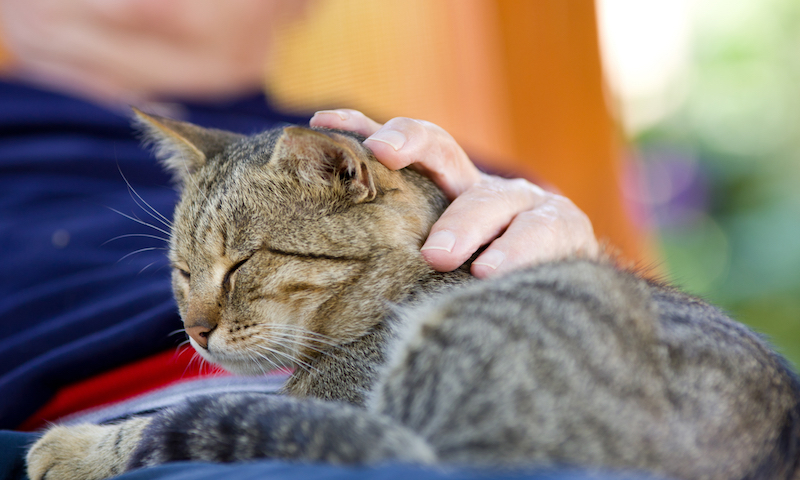The soothing purr of a cat is possibly one of the most calming sounds in the world, at least for those who enjoy feline companionship. This wonderfully enigmatic and auditory pacifier is shrouded in mystery as there is no definitive answer to the question, ‘Why do cats purr?’. There are, however, several plausible explanations.
The layman feline fanciers, and others alike, guess that cats purr when they are happy, calm, or otherwise pleased with the status quo; however, this observation, though mainly true, it is not always so. Cats are known for purring when injured, hungry, or even frightened. One study of the cat’s purr has shown that the purring promotes bone regeneration, leading some to believe that one function of purring is to help the cat’s body heal itself more quickly than it otherwise could.
A cat’s purring has a low frequency, and volume, which means the sound cannot travel far, leading to the hypothesis that the purr is meant for the cat herself and those nearby (offspring, mates, extended family). The purring is most often associated with activities such as relaxing, nursing, grooming, and when showing affection. Despite these explanations, purring is most likely just a way for cats to sooth themselves, as a human being would by crying or distracting himself by engaging in trivial activities, such as organizing a drawer.
Veterinarian Kelly Morgan likens the cat’s purr to the human smile—a smile can be produced due to pure joy, nervousness, or the desire to assuage someone’s uneasiness. Similarly, a purr can be said to perform the same functions, but does seem to go beyond that as it has other scientifically proven properties.
As mentioned before a purr can have healing properties, specifically bone regeneration. Researchers have shown that frequencies between 24-140 vibrations per min can promote for bone growth, pain relief, and even the healing of wounds. Measurement of purrs from a variety of felines has shown that the purring usually has a frequency that falls within that range.
One very interesting hypothesis, and the last one we will cover here, is that due to the feline adaptation of conserving energy through long periods of rest has resulted in the development of one and muscle stimulation through purring to counter any muscle or bone loss that may occur as a result of these long periods of inactivity.
Interesting Facts About Feline Purring
Another interesting tidbit about purring is that purring is not a behavioral trait displayed only by domesticated cats. Some large cats, including cheetahs, bobcats, and pumas, also are able to purr.
You may have noticed that cats are able to purr while breathing, and there are no interruptions to the sound during inhaling or exhaling. This is because the purring vocalization is produced during the entire respiratory cycle, so a cat is able to produce a consistent purring sound without any breaks.
A short audio file of a cat purring:

